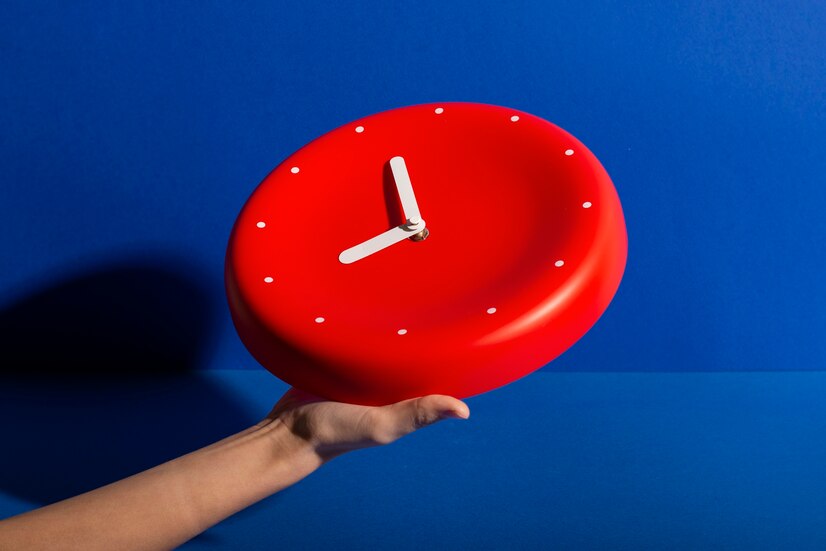Are you exhausted from trying to “hack” your way to success? Tired of productivity advice that falls flat? The problem isn’t you – it’s the productivity lies we’ve all been sold. Today, we’re shattering these productivity myths once and for all. Ditch the desperation, and learn to achieve your goals without sacrificing your sanity.
7 Productivity Myths Sabotaging Your Results (and What to Do Instead)

Myth 1: Busyness Equals Productivity
We live in a society that glorifies busyness. We wear our packed schedules like badges of honour, believing that the more we do, the more productive we must be. But this is a dangerous productivity myth. Busyness doesn’t automatically lead to results. In fact, it can be the enemy of true productivity. We fall into the busy trap – of constantly checking things off our to-do list, mistaking mindless activity for progress. This constant state of “doing” leaves us burnt out, overwhelmed, and with little to show for all our effort.
What to Do Instead
To break free from the busyness trap, focus on the 80/20 rule (also known as the Pareto Principle). This concept states that 80% of your results come from just 20% of your efforts. The key to real productivity lies in identifying those high-value tasks and ruthlessly prioritizing them. For everything else, ask yourself: can this task be eliminated entirely? Would it be better suited for someone else to do it? Or can it be postponed for now? Finally, shift your focus from measuring productivity in hours to measuring it in results. Ask yourself at the end of each day: “What tangible value did I create today?” This mindset change will help you break free from the busywork addiction and achieve true progress towards your goals.
Myth 2: Maximizing Every Waking Moment

We’re told that to be truly productive, we must squeeze every drop of potential out of each day. The idea is to fill our schedules to the brim, leaving no room for downtime or breaks. However, this mindset is counterproductive and unsustainable.
Rest, strategic breaks, and even moments of “unproductive” time are essential for creativity, focus, and long-term success. Our brains and bodies aren’t designed for non-stop output. Pushing ourselves too hard without respite leads to burnout, decreased decision-making ability, and ultimately, less optimal results.
What to Do Instead
Embrace the power of strategic breaks. Research shows that short bursts of focused work followed by planned breaks boost productivity. Experiment with techniques like the Pomodoro Method (work blocks with timed breaks built-in) and the Reitoff principle. Schedule time for activities that recharge you, whether that’s a quick walk, listening to music, or simply doing nothing. Recognize that downtime is not wasted time – it’s an investment in your long-term productivity and well-being
Myth 3: Working Longer Hours Makes You More Productive
This productivity myth is deeply ingrained in our hustle culture. We believe that working longer hours automatically translates to greater output. However, research consistently shows that beyond a certain point, productivity drastically declines.
Long work hours lead to fatigue, decreased focus, increased errors, and ultimately, burnout. It’s a vicious cycle where working more ultimately leads to achieving less. That’s why I appreciate the values of a company like Whiteboard (get you a company like that)
What to Do Instead
Focus on working smarter, not harder. Prioritize completing your most important tasks within a reasonable timeframe. Leverage time management techniques and learn to say ‘no’ to distractions and non-essential commitments.
Respect your limits and prioritize rest and recovery. Remember, it is the pause in the symphony that allows the music to truly resonate. It’s the same reason a well-rested and energized mind is significantly more productive than an overworked one.
Myth 4: The Rigid Schedule Trap

Again, we hear that the secret to productivity lies in creating a strict daily schedule and sticking to it no matter what. That’s a planning fallacy. While having some structure is certainly helpful, this productivity myth can lead to frustration and decreased motivation.
Life is unpredictable. Unexpected events, shifts in energy levels, or sudden bursts of creativity can disrupt even the most carefully planned schedule. Rigidly adhering to a plan when circumstances change can create unnecessary stress and limit your ability to adapt.
What to Do Instead
Embrace a flexible approach to your schedule. Plan your days and weeks with a general outline, while leaving room for adjustments and spontaneity. Block out time for your most important tasks, but also build buffer zones to accommodate the unexpected.
Focus on prioritizing goals rather than rigidly adhering to a minute-by-minute plan. Regularly review your schedule and how you use your time, making adjustments as needed. A flexible approach empowers you to flow with changes for ultimate productivity and reduced stress.
Myth 5: Consistency is the Key to Productivity
Perhaps you’ve also been told that the secret to achieving your goals lies in consistent, daily effort. While consistency is undoubtedly important, this productivity myth can be harmful when taken too rigidly. Life happens, and there will be days when sticking to your routine is simply not possible. Focusing solely on daily consistency can lead to feelings of guilt, discouragement, and even a complete abandonment of your goals when you inevitably have an “off” day.
What to Do Instead
Embrace a broader view of consistency. Focus on consistent progress over time, rather than perfection every single day. Aim for high-intensity bursts of focused work when you have the energy and mental clarity, and allow yourself breaks and recovery periods when needed. Recognize that setbacks and pauses are a natural part of the journey.
Instead of beating yourself up over missed days, pick yourself back up and recommit to your goals. This flexible approach to consistency ultimately leads to more sustainable progress and greater resilience.
Myth 6: Multitasking is the Key to Productivity

In our fast-paced world, multitasking is often seen as a superpower – the ability to juggle multiple tasks at once is praised as a sign of efficiency. However, the truth is that our brains are not designed to truly multitask. When we try to focus on multiple things simultaneously, we’re actually rapidly switching our attention between tasks. This constant context-switching takes a significant toll on our cognitive resources, leading to decreased focus, more errors, and longer overall task completion times.
What to Do Instead
Embrace the power of single-tasking and deep work. Dedicate your full attention to one task at a time. Turn off notifications, minimize distractions, and create a focused work environment. Practice mindfulness and bring your attention back to the present task whenever your mind starts to wander. By focusing on one thing at a time, you’ll complete tasks faster, with higher quality, and less mental exhaustion.
Myth 7: You Need to Eliminate All Distractions to Be Productive
This productivity myth suggests that we need to create a perfectly sterile, distraction-free environment to focus. While minimizing major disruptions is essential, the reality is that some level of background noise or activity can actually be beneficial. Research shows that moderate levels of ambient noise can enhance creativity and problem-solving abilities. The key isn’t complete silence, but finding the right type of distraction for your task and your individual preferences.
What to Do Instead
Experiment with different environments and types of background noise to find what works best for you. For tasks requiring deep focus, consider noise-cancelling headphones or white noise. For creative tasks, try soft instrumental music or even the ambient sounds of a coffee shop. Pay attention to how different distractions affect your concentration and productivity. The goal is to find the optimal level of stimulation that helps you focus without feeling overwhelmed
Myth 8: Motivation Must Come Before Action
This is a pervasive productivity myth: the belief that we need to feel inspired, energized, and completely “ready” before we can tackle a task. The problem is that waiting for that perfect surge of motivation often leads to procrastination and missed opportunities. In reality, motivation is often a result of action, not a prerequisite for it. The act of starting, even with small steps, builds momentum. As you make progress, you’ll naturally feel more motivated to continue.
What to Do Instead
Don’t fall into the trap of waiting for motivation to strike. Instead, focus on taking action. Break down large projects into smaller, more manageable tasks. Start with something simple, even if it feels insignificant. The act of starting will generate motivation, creating a positive feedback loop. Remember, consistency often trumps initial bursts of inspiration when it comes to reaching your goals.
The Path to True Productivity
By debunking these pervasive productivity myths, you’ve broken free from the constraints of outdated and harmful advice. You now understand that productivity isn’t about constant busyness, rigid schedules, or superhuman levels of motivation. True productivity lies in working smarter, embracing flexibility, and respecting your limits as much as your potential.
Remember, productivity is a journey, not a destination. There will be setbacks and days when even the best strategies fail. Grant yourself grace, learn from the experience, and keep moving forward. Bookmark this page, as we’ll be expanding it with even more myth-busting insights and practical techniques to empower you on your productivity journey. You’ve got this!



2 thoughts on “8 Productivity Myths Sabotaging Your Success (and How to Fix Them)”
Feels like my steps are being redirected. Thank you for this amazing write up
Oh wow @Florence. That’s interesting. Let me know how the ‘new’ path goes.